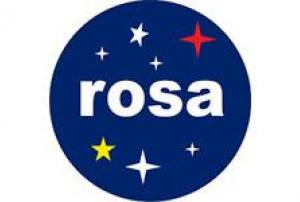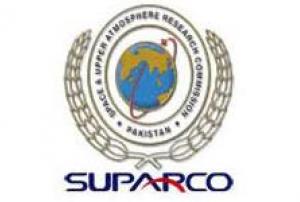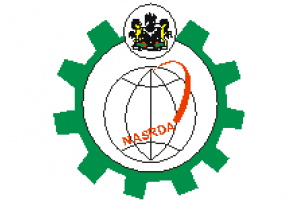Inundación
Definition
Facts and figures
Further information
UN-SPIDER Regional Support Offices with hazard-specific expertise
Related content on the Knowledge Portal
The overall goal of this study is to strengthen the quality, accuracy, and completeness of disaster data in Europe. As part of the MICRODIS project, the study analyses the impact of recent disasters on human populations, using both statistical and spatial data through generated geocoded maps of impact areas. It is intended to serve as a preliminary and descriptive investigation to reveal certain possibilities and serve as the basis for further research.
read moreThe importance of sea-level rise in shaping coastal landscapes is well recognized within the earth science community, but as with many natural hazards, communicating the risks associated with sea-level rise remains a challenge. Topography is a key parameter that influences many of the processes involved in coastal change, and thus, up-to-date, high-resolution, high-accuracy elevation data are required to model the coastal environment. Maps of areas subject to potential inundation have great utility to planners and managers concerned with the effects of sea-level rise. However, most of the maps produced to date are simplistic representations derived from older, coarse elevation data. In the last several years, vast amounts of high quality elevation data derived from lidar have become available. Because of their high vertical accuracy and spatial resolution, these lidar data are an excellent source of up-to-date information from which to improve identification and...
read moreThe Tropical Rainfall Measuring Mission (TRMM), launched in 1997, uses active and passive microwave instruments to confirm the validity of tropical rainfall estimates derived from operational passive microwave sensors and provides a foundation for merging rainfall information from other satellites. High-resolution microwave information is important for fixing the locations of tropical cyclone tracks as well as establishing accurate initial positions to effectively forecast tropical cyclone progression. The TRMM Microwave Imager (TMI) is designed to “see” through clouds and provide high-resolution rainfall structure information within tropical cyclones. TRMM’s Precipitation Radar (PR) is designed to provide vertical structure information within tropical cyclones. Together, TRMM PR and TMI data have been used to establish key characteristics of the distribution and variability of rainfall in tropical cyclones and obtain insights into storm structure,...
read moreA methodology for satellite based flood detection developed (Brakenridge et al, 2007) at Dartmouth Flood Observatory (DFO) was modified at the Joint Research Centre (JRC) of the European Commission and implemented on an automatic operational basis. The technique uses AMSR-E passive
read more
microwave remote sensing data of the descending orbit, H polarization, 36 GHz band which is sensitive to water surface changes. The sensor revisits every place on Earth once per day and can therefore provide a daily temporal resolution. Sensor data is available 24 hours after acquisition.
Thresholding the signal of water surface change allows the detection of riverine inundation events. The comparison of gauging and satellite measurements show a significant correlation in the increase of river discharge on-site and changes in the observed signal of the sensor. Thus the technique for the detection of flood events in ungauged and inaccessible remote river channels is feasible from...Publishing institution:A methodology for satellite based flood detection developed (Brakenridge et al, 2007) at Dartmouth Flood Observatory (DFO) was modified at the Joint Research Centre (JRC) of the European Commission and implemented on an automatic operational basis. The technique uses AMSR-E passive
read more
microwave remote sensing data of the descending orbit, H polarization, 36 GHz band which is sensitive to water surface changes. The sensor revisits every place on Earth once per day and can therefore provide a daily temporal resolution. Sensor data is available 24 hours after acquisition.
Thresholding the signal of water surface change allows the detection of riverine inundation events. The comparison of gauging and satellite measurements show a significant correlation in the increase of river discharge on-site and changes in the observed signal of the sensor. Thus the technique for the detection of flood events in ungauged and inaccessible remote river channels is feasible from...Publishing institution:Near real-time global flood models do not adjust lake levels and river flow rates to reflect effects of dams. Incorrect data can leave surrounding communities vulnerable to potential flood disasters. Adjusted flood models that properly account for downstream releases can help to mitigate the effects of future floods. Using Jason-1, Jason-2 and Envisat altimeters a comparison with in-situ data for a study site demonstrated the usefulness of satelitte altimetry data for measuring reservoir heights, thus providing information on water storage changes.
read morePublishing institution:Intense and continuous rains brought on by tropical depression TD17F caused flooding in large parts of Fiji.In some places more than 300 mm of rain fell in less than 24 hours since the early hours of 30 March and subsequent flash flooding caught many by surprise. So far three deaths have been reported.
As of 31 March 2012, 49 evacuation centers (of which 31 schools) with in total more than 3700 people, approximately half of which are children, have been operational in Ra (4), Tavua (5), Ba (14), Lautoka (10), Nadi (8) and Sigatoka (8).The situation is considered worse than the recent flooding in January 2012,as more areas are flooded. Deterioration of the situation can be expected as further weather systems accompanied by heavy rains are expected to affect Fiji.
The International Charter Space and Major Disasters was activated by UNOOSA on behalf of the OCHA Sub...
read moreThe UN-SPIDER Regional Support Office (RSO) in Romania is hosted by the Romanian Space Agency (ROSA). The cooperation agreement between ROSA and UNOOSA was signed on occasion of the 52nd COPUOS, 4 June 2009.
Established in 1991, by the Government Decision no. 923/ 20 Nov 1995, ROSA is an independent public institution.
The mission of the Agency:
- to coordinate the national space research and applications programs
- to promote space development
- to be the Government representative in the international space cooperation
- to develop specific project oriented research
ROSA is authorized to establish research and development centres oriented on specific objectives of the Romanian Space Programme.
read moreThe Space and Upper Atmosphere Research Commission (SUPARCO) of Pakistan and the United Nations Office of Outer space Affairs (UNOOSA) signed the cooperation agreement on the establishment of a UN-SPIDER Regional Support Office (RSO) on the occasion of the 47th Scientific and Technical Subcommittee sessions on 12 February 2010.
SUPARCO, the national space agency, was established in 1961 as a Committee and was granted the status of a Commission in 1981. SUPARCO is mandated to conduct R&D in space science, space technology, and their peaceful applications in the country. It works towards developing indigenous capabilities in space technology and promoting space applications for socio-economic uplift of the country.
Address:
Pakistan Space and Upper Atmosphere Research Commission (SUPARCO)
Islamabad Highway,
Islamabad-44000 PakistanMission/Objective:
To...
read more




